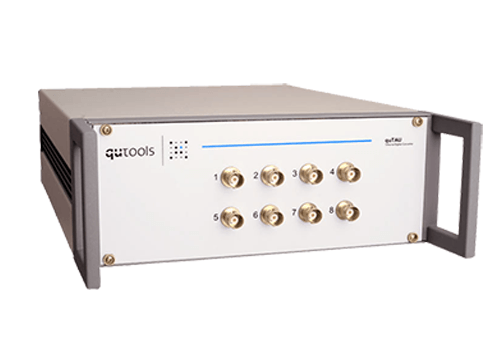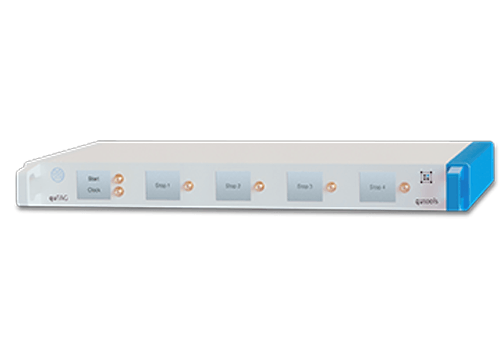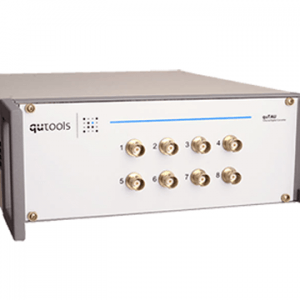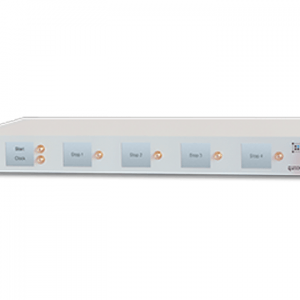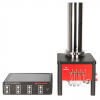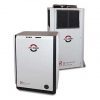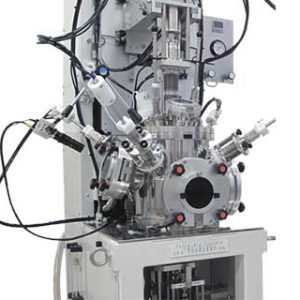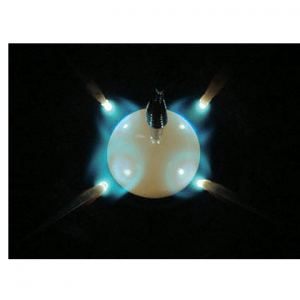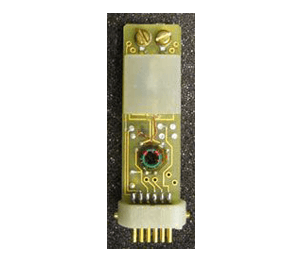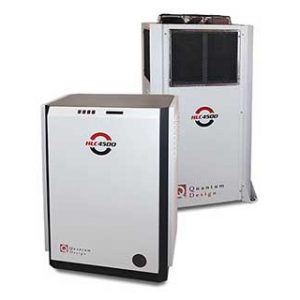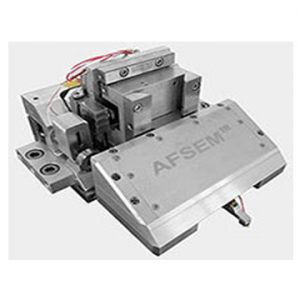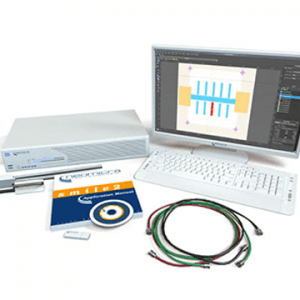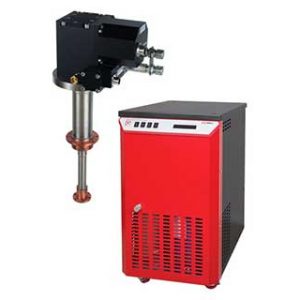qutools Quantum Optics
qutools develops, manufactures and distributes quantum information products, which include: entangled photon sources, quantum random number generators, quantum cryptography systems and quantum optics components.
qutools develops, manufactures and distributes quantum information products, which include: entangled photon sources, quantum random number generators, quantum cryptography systems and quantum optics components. Most of the products have been developed and/or tested in the quantum information research labs of the Ludwig-Maximilians-University of Munich. It is the aim of qutools to continue developing new tools and improving existing tools for quantum information science, quantum metrology and quantum cryptography.
quTAU
The quTAU system can be used to transfer the time tags of registered events with picosecond (ps) precision and at high rates to a PC. Additionally, it can count single and multiple channel coincident events at even higher rates internally and convey those to a PC. As a standard time-to-digital converter (TDC), quTAU registers incoming signal events on 8 independent channels, records their exact time (bin size 81 ps) and channel number and communicates these to a PC. A graphical user interface is supplied for Windows and Linux, software examples are available for C/C++ (Windows and Linux) and LabVIEW. For some applications it is not important to know the absolute time of its occurrence, but only whether or not it appeared within a short timing window (the so-called coincidence window) around an event at another channel. For this purpose the user can set a coincidence timing window and then the quTAU counts events that happen individually or coincident with another event for the different combinations of channels (4 channels are used for this purpose). Because of the reduced amount of data, this mode can handle significantly higher event rates.
The quTAU (H+) incorporates three new extensions that make it useful for more purposes than the basic quTAU. These are:
Input Hardware Extension: The input extension widens the range of signals able to be processed with regard to signal levels and maximum rate. Adjustable threshold comparators at each channel allow the quTAU (H+) to process NIM and user defined signals as well as (LV)TTL. One channel additionally features a divider so that high frequency periodic signals can be used as triggers.
Lifetime Software Extension: This software add-on enables the user to analyze lifetime measurements on the fly. Together with the input hardware extension, high frequency trigger signals can be used. The software calculates the required histograms, fits exponential decreases and takes response functions of the system into account.
HBT Software Extension: This software extension is intended for Hanbury-Brown Twiss experiments. It calculates the g(2)(τ) function from the detection times of two inputs. Standard functions can be fitted to assess the relevant parameters.
quTAU Key Features
- 8 input channels (LV)TTL
- 81 ps resolution (bin size)
- USB 2.0 interface
- Compact and easy-to-use
- Graphical user interface and device drivers for Windows and Linux
- Example software for C/C++ and LabVIEW
Additional quTAU (H+) Key Features
- 8 input channels (LV)TTL / NIM / User adjustable settings
- 1 channel features divider for periodic input signals (e.g. laser synchronization)
Applications
- Time Correlated Single Photon Counting (TCSPC)
- Quantum Optics<
- Quantum Cryptography / Quantum Key Distribution
- High Energy Physics
- High Precision Time Measurements
- Fluorescence Microscopy
- Fluorescence Lifetime Imaging
- Fluorescence Correlation Spectroscopy
- LIDAR
quTAG
The quTAG is a high-speed Time-Correlated Single Photon Counting (TCSPC) system. It is capable of detecting events with a digital resolution of 1 picosecond (ps) and a jitter under 10 ps RMS using four to 16 different channels. This allows it to capture up to 100 million time tags per second. It registers all signals between -2 up to +3 volts, like the widely used LVTTL or NIM. Separate channels for start and external clock are usable on the front panel. It connects with a computer via USB, preferably USB 3.0, to transfer the extensive data. It is delivered including software for Windows and Linux with an easy to use graphical user interface. DLLs and examples for LabVIEW and Python also are included.
Key Features
- < 25 ps / < 10 ps timing jitter (FWHM/RMS)
- 100 MEvents/s max. rate
- 1 ps digital resolution
- 4 stop channels, 1 start channel
- Max. 16 stop channels
Applications
- Time-Correlated Single Photon Counting (TCSPC)
- Quantum Optics / Information / Communication
- Fluorescence / Phosphorescence Lifetime Imaging
- Fluorescence Correlation Spectroscopy (FCS)
- Stimulated Emission Depletion Microscopy (STED)
- Foerster Resonance Energy Transfer (FRET)
- Single Photon Emitter Characterization
- LIDAR
Specifications
| Timing jitter | < 10 ps RMS < 25 ps FWHM |
| Digital resolution | 1 ps |
| Number of stop channels | 4 (max. 16) |
| Max event rate | 100 M/s (per device) 25 M/s (per channel) |
| Input signals | e.g. LVTTL, NIM everything between -2 V and +3 V |
| Input connectors | SMA |
| Connection to PC | USB 3.0 USB 2.0 |
| Software | GUI, DLL, LabVIEW, Python, Command line Windows, Linux |
| Dimensions | 44 cm x 30 cm x 5 cm |
See the quTAG product page at qutools.com for Use Case Examples
quRNG
The qutool quRNG 50 is a quantum random number generator (QRNG, also known as quantum random bit generator QRBG) producing true random numbers with a maximum bit rate of 50 Mbit/s. It is read out via a USB-2.0 interface. The source of randomness is based on the uncertainty of the detection time of photons emitted from a light emitting diode (LED). These photons are collected by a single photon detector at a high rate and subsequently digitized. The random bit stream can be output at an adjustable rate. With careful tuning of the LED’s light intensity, post processing can be omitted completely. The output of the quRNG 50 passes the usual test suites for physical random number generators. There are research and industrial versions available. Both versions continuously run tests on the state of the random bit stream to ensure their high quality level.
Key Features
- True Quantum Random Numbers
- High Speed (50 Mbit/s)
- USB 2.0 connection
- Post-Processing Unnecessary
- Continuous Self-Tests
- Easy-To-Use, Reliable
Applications
- Cryptography
- (Online) Gambling / Lotteries
- Numerical Simulations (e.g. Monte-Carlo Simulations)
- PIN / TAN Generation
- Quantum Key Distribution / Quantum Cryptography
Related products
Quantum Design
Manufactured by GES Corporation, this tetra arc crystal furnace uses the Czochralski pulling method and four electric arcs to grow a wide range of metallic-conductive materials such as metallic compounds and high-temperature superconductors.
Quantum Design
Designed to serve a variety of applications, Tweez finds its use ranging from physics to biology, from fundamental research to industrial applications.
Quantum Design
Quantum Design's patented high-symmetry SQUID design and electronics provide the most rugged and sensitive all-thin-film sensors commercially available, and give you everything you need to configure flexible, powerful detection systems for your research.
Quantum Design
Quantum Design brings its 30+ years of low temperature instrumentation design to the development and manufacture of an innovative line of compressors and Gifford-McMahon (G-M) closed-cycle cryo-refrigerators. Variable speed energy efficiency, longer uninterrupted run times between servicing, and low vibration operation are all hallmarks of these cryogenic refrigeration products.
Quantum Design
The OptiCool by Quantum Design is a new magneto-optical cryostat using an innovative design that puts the sample volume in the heart of your optical environment.
Quantum Design
AFSEM™ is an atomic force microscope (AFM) by GETec Microscopy, designed for integration in a SEM or Dualbeam (SEM/FIB) microscope.
Quantum Design
neomicra’s smile2 e-beam lithography solution can be attached to any electron microscope or focused ion beam (FIB) microscope.
Quantum Design
Quantum Design brings its 30+ years of low temperature instrumentation design to the development and manufacture of an innovative line of compressors and Gifford-McMahon (G-M) closed-cycle cryo-refrigerators. Variable speed energy efficiency, longer uninterrupted run times between servicing, and low vibration operation are all hallmarks of these cryogenic refrigeration products.

